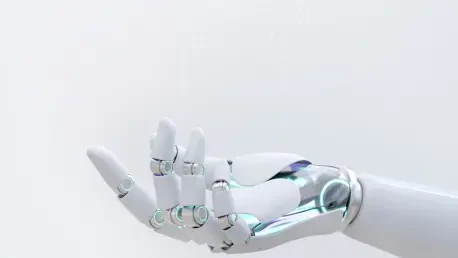In the rapidly evolving landscape of artificial intelligence, enterprise automation faces a critical challenge: fragmented AI systems that struggle to communicate and collaborate effectively. Imagine a multinational corporation trying to streamline its financial compliance checks, only to discover that its specialized AI agents, built on disparate platforms, cannot exchange data or coordinate tasks without cumbersome custom integrations. This all-too-common scenario in today’s tech ecosystem highlights the urgent need for a unifying framework. Enter the Agent-to-Agent (A2A) Protocol, a vendor-neutral, open-source specification initiated by Google in April of this year, designed to enable seamless interaction among autonomous AI agents. This review delves into the intricacies of A2A, examining its features, real-world impact, and potential to redefine collaborative AI ecosystems.
Core Features and Capabilities
Interoperability as a Foundation
At the heart of A2A lies its commitment to interoperability, a feature that allows AI agents developed on diverse platforms—such as LangChain or custom Python frameworks—to communicate effortlessly. By employing a standardized message schema, A2A eliminates the need for custom integrations, decoupling the internal logic of agents from their interaction mechanisms. This design ensures that systems, regardless of their origin or architecture, can collaborate on complex tasks without friction.
This framework-agnostic approach marks a significant departure from the siloed nature of earlier AI implementations. Developers can now focus on building specialized agents without worrying about compatibility issues, knowing that A2A provides a common language for interaction. The result is a more flexible and inclusive ecosystem where innovation is not stifled by technical barriers.
Structured Collaboration Through Task Delegation
Another standout feature of A2A is its structured approach to task delegation, facilitated by well-defined data structures like task objects, agent cards, messages, and artifacts. A task object serves as the central unit of work, complete with a unique identifier and input payload, enabling precise assignment and tracking. Agent cards, in turn, act as public metadata profiles, detailing an agent’s capabilities and authentication methods for easy discovery and trust-building.
The collaboration process is meticulously organized: a requesting agent issues a task, the providing agent acknowledges it, and status updates are streamed via messages. Upon completion, results are delivered as artifacts, ensuring clarity and accountability throughout multi-step workflows. This mechanism proves invaluable for managing intricate processes like recruiting pipelines, where multiple agents must coordinate seamlessly to achieve a common goal.
Performance and Industry Adoption
Real-World Applications Across Sectors
Since its launch, A2A has demonstrated tangible impact across various industries, with early adopters leveraging its capabilities to enhance automation. For instance, Box AI Agents have successfully coordinated with external platforms through A2A-compliant endpoints, streamlining content management tasks. Similarly, Twilio has implemented A2A extensions for intelligent routing, optimizing communication workflows by factoring in latency data.
These examples highlight A2A’s versatility in enterprise settings, particularly in scenarios requiring cross-system collaboration. Financial institutions have begun using the protocol for compliance checks, where agents verify transactions and flag anomalies in tandem. Such applications underscore how A2A transforms isolated tools into cohesive networks, amplifying their collective efficiency.
Endorsements and Growing Ecosystem
The protocol’s adoption has been bolstered by endorsements from major tech players, signaling strong industry confidence. Google, as the originator, announced support from over 50 partners at launch, including Atlassian, SAP, and PayPal. Microsoft has also integrated A2A into its Azure AI Foundry and Copilot Studio, further validating its relevance in mainstream AI development.
This widespread backing reflects a broader trend toward collaborative AI ecosystems, where the focus shifts from standalone agents to orchestrated teams. As more organizations experiment with publishing agent cards and defining tasks, A2A is poised to become a cornerstone of enterprise automation, fostering scalability and adaptability in distributed environments.
Challenges and Limitations
Technical and Security Hurdles
Despite its promise, A2A faces notable technical challenges that could impede broader adoption. Schema misinterpretations between agents can lead to communication breakdowns, while security risks such as data leaks or identity spoofing pose significant concerns. The open nature of the protocol, while fostering inclusivity, also introduces vulnerabilities that malicious entities might exploit.
Efforts to address these issues are underway, with developers exploring enhanced encryption methods and authentication protocols. However, ensuring robust security without compromising the protocol’s accessibility remains a delicate balance. Enterprises must remain vigilant, implementing additional safeguards to protect sensitive interactions.
Regulatory and Market Barriers
Beyond technical obstacles, A2A encounters regulatory and market resistance that could slow its rollout. Compliance with varying data protection laws across regions presents a complex hurdle, as does the reluctance of some vendors to adopt a vendor-neutral standard over proprietary solutions. These barriers highlight the need for unified governance frameworks to standardize implementation practices.
Ongoing discussions around trust registries, similar to certificate authorities on the web, offer a potential solution to establish credibility among agents. Until such mechanisms are widely accepted, A2A’s growth may be constrained by fragmented policies and competitive dynamics within the AI industry.
Future Outlook and Potential Evolution
Anticipated Advancements in Security and Scale
Looking ahead, A2A is expected to evolve with significant improvements in security and scalability over the next few years, potentially from now through 2027. Innovations in digital signatures and auditable event logs could mitigate current vulnerabilities, ensuring safer interactions in distributed networks. Additionally, advancements in handling asynchronous, large-scale deployments may further solidify A2A’s role in enterprise settings.
The protocol’s ability to adapt to emerging needs will be critical as AI systems become more complex. By prioritizing resilience against network failures and supporting partial result streaming, A2A can cater to increasingly demanding workflows, positioning itself as a reliable backbone for distributed intelligence.
Long-Term Impact on Automation
In the long run, A2A has the potential to become a ubiquitous standard, much like HTTP has for web communication. Its influence could extend beyond niche applications to fundamentally reshape how enterprises approach automation, enabling seamless collaboration across domains. The vision of a world where AI agents operate as effortlessly as web services is within reach, provided ongoing challenges are addressed.
This transformative potential hinges on continued industry collaboration and investment in refining the protocol. As multi-agent systems become integral to business operations, A2A could redefine efficiency, driving innovation in ways that single-agent models cannot match.
Final Assessment
Reflecting on this evaluation, the Agent-to-Agent Protocol stands out as a pioneering framework that tackles the critical issue of interoperability in AI systems. Its structured approach to task delegation and endorsements from industry giants mark it as a significant step forward in collaborative automation. Despite facing hurdles in security and regulatory alignment, its early applications in enterprise environments showcase a promising trajectory.
Moving forward, stakeholders should prioritize the development of robust governance models to address lingering risks, ensuring that A2A’s open design does not compromise trust. Enterprises exploring adoption should begin by testing small-scale implementations, focusing on defining clear task structures and monitoring outcomes. As the protocol matures, active participation in shaping trust registries and security standards will be essential to unlock its full potential, paving the way for a new era of distributed AI collaboration.









